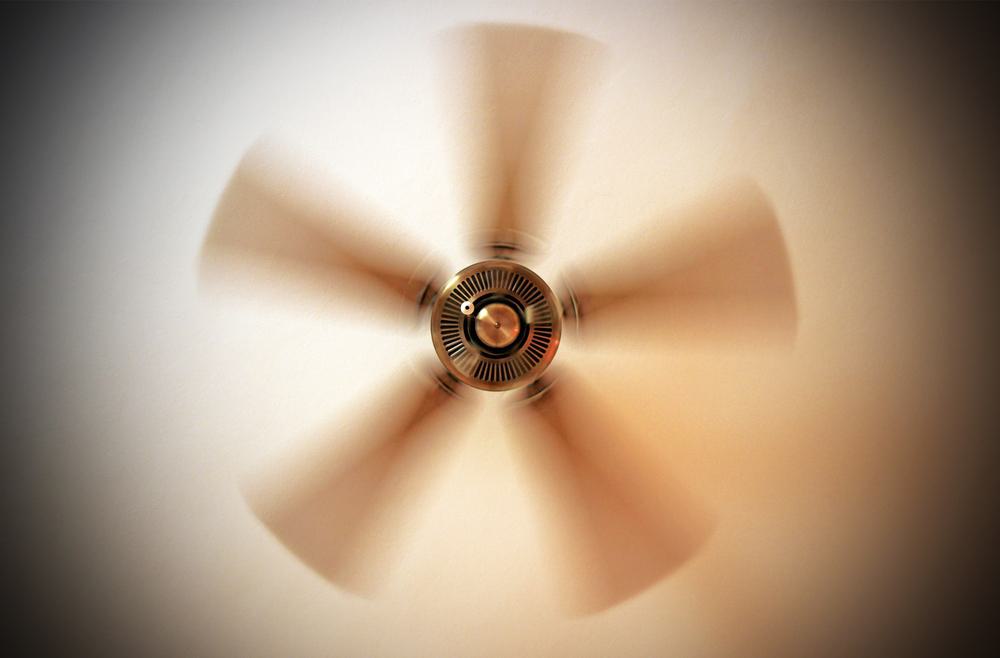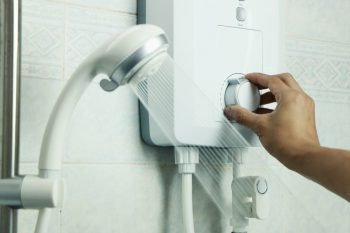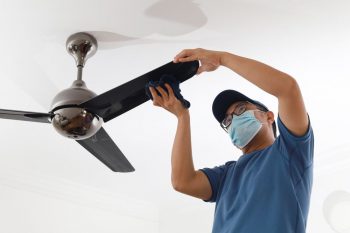
When it comes to home improvements, installing a ceiling fan is a task that can drastically improve the comfort of your living space. However, a crucial step in this process involves installing a ceiling fan brace, a support system that reinforces the structural integrity of a junction box, ensuring that the ceiling fan stays in place. In this comprehensive guide, we will walk you through the steps on how to install a ceiling fan brace, the tools you’ll need, and tips to make the process smoother.
To install a ceiling fan brace, first turn off the power at the circuit breaker. Remove any existing light fixture and install the ceiling fan brace into the ceiling through the junction box hole, ensuring it’s firmly locked into the joist. Attach the U-bolt bracket to the brace, and secure the junction box to the brace. Follow the manufacturer’s instructions to assemble and install the ceiling fan, then turn the power back on to test the fan.
What is a Ceiling Fan Brace?
A ceiling fan brace is a metal bar that provides support for the junction box and the ceiling fan. It is designed to fit between two ceiling joists, providing a stable and secure support structure for the ceiling fan. Without the added support from a brace, a ceiling fan may fall and cause damage to the drywall.
Tools and Materials Needed
Before you begin, gather the following tools and materials:
- Ceiling fan brace
- Ceiling fan-rated electrical box
- Ladder
- Adjustable wrench
- Drill
- Screwdriver
- Wire cutters/strippers
- Non-contact voltage tester
- Pliers
- Safety glasses
Choosing the Right Ceiling Fan Brace
When choosing a ceiling fan brace, consider the weight of your ceiling fan to ensure the brace can support it. Also, consider whether your installation is for a new work or old work environment. Braces for new work are designed for use in new construction or applications where joists are accessible, while braces for old work are designed for renovation applications where joist access is limited.
Step-by-Step Guide to Installing a Ceiling Fan Brace
Step 1: Turn Off the Power
Safety first! Always shut off the power at the circuit breaker before starting any electrical work.
Step 2: Remove the Existing Light Fixture
If there’s an existing light fixture, remove it from the junction box. Use a non-contact voltage tester to ensure no live wires are present before touching them.
Step 3: Install the Ceiling Fan Brace
Insert the ceiling fan brace into the ceiling through the junction box hole. Rotate the square tube of the brace by hand until the teeth are firmly locked into the joist.
Step 4: Attach the U-Bolt Bracket
Center the U-bolt bracket on the fan brace with the bolts facing downward.
Step 5: Mount the Junction Box
Secure the junction box to the fan brace using appropriate hardware. The junction box should be specifically designed for ceiling fans to support their weight.
Step 6: Assemble and Install the Ceiling Fan
Follow the manufacturer’s instructions for assembling and installing the ceiling fan. Make sure all screws and connections are tightened properly to prevent wobbling or noise issues.
Step 7: Test the Ceiling Fan
Turn the power back on and test the fan to ensure it operates correctly. If you notice any wobbling or noise, double-check that all screws and connections are tightened appropriately.
Common Mistakes to Avoid
Avoid common mistakes such as not turning off the power before starting the installation, not using a fan-rated junction box, not securing the brace properly between the joists, and not following the manufacturer’s instructions for the fan assembly.
By taking the time to install a ceiling fan brace, you can ensure a safe and secure installation of your ceiling fan. Whether you’re a seasoned DIY enthusiast or a beginner, this guide provides a comprehensive walkthrough to help you through the process.
Frequently Asked Questions
Can I use a regular junction box instead of a ceiling fan-rated one?
No, it’s important to use a ceiling fan-rated junction box. These are specifically designed to handle the weight and motion of a ceiling fan. Using a regular junction box can result in the fan falling due to insufficient support.
How do I know if my ceiling fan brace is installed correctly?
A correctly installed ceiling fan brace should be securely locked between the joists and should not move when pressure is applied. If the brace is loose or wobbly, it’s not installed properly and needs to be adjusted.
What type of ceiling fan brace should I use for a suspended ceiling?
For a suspended or drop ceiling, you should use a special suspended ceiling fan brace. These are designed to fit into the ceiling grid and provide the necessary support for a ceiling fan.
Can I install a ceiling fan without a brace?
No, it’s not safe to install a ceiling fan without a brace. The brace provides the necessary support to handle the weight and motion of the fan. Installing a ceiling fan without a brace can result in the fan falling and causing damage or injury.
What is the difference between a new work brace and an old work brace?
A new work brace is designed for use in new construction or applications where joists are accessible. An old work brace, on the other hand, is designed for renovation applications where access to joists may be limited or non-existent.












